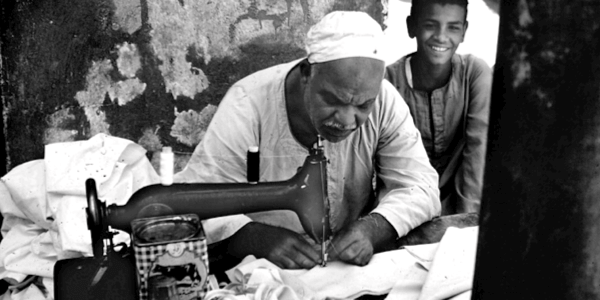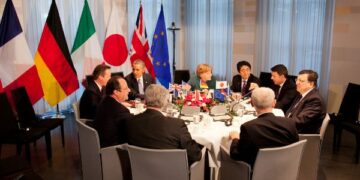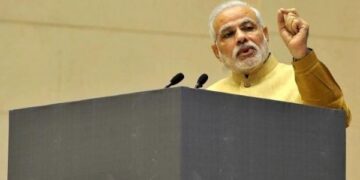For quite some time, the PM Mega Integrated Textile Region and Apparel (PM MITRA) Scheme Yojana has been making headlines. Learn about the Mitra scheme’s importance, components, and benefits, as well as other details, by reading this article. The UPSC GS3 paper on Indian Economy and Infrastructure covers this subject. So let’s get started by reading the entire topic.
What is PM Mitra Yojana Scheme?
- PM MITRA Scheme (Mega Integrated Textile Region and Apparel) was initially declared in the Union Budget for the fiscal year 2021-22.
- Farm to Fibre to Factory to Fashion to Foreign is the 5F vision.
- This holistic perspective will aid the textile industry’s expansion.
- The MITRA parks will be set up in greenfield and brownfield areas across the country.
- PM MITRA Park will be constructed by a Special Purpose Vehicle that will be jointly controlled by the state government and the Indian government in a Public-Private-Partnership (PPP) model.
- A brownfield project is one that has already been completed, whereas a greenfield project must be started from scratch.
- Each MITRA Scheme Park will include an incubation center, a standard processing facility, a common effluent treatment plant, and other textile-related facilities such as design and testing centers.
Why in the News:
The Ministry of Textiles hosted a national conference on the PM Mega Integrated Textile Regions and Apparel Park (PM MITRA) Parks Scheme on May 4, 2022.
- In the free trade agreements that India is negotiating with other countries, the textile sector has been designated as a focus area.
- It recently reached an agreement with the UAE and Australia for zero-duty textile exports, which will help boost domestic production.
- Similar FTA negotiations are underway with larger markets such as the United Kingdom and the European Union.
- The Ministry of Textiles plans to invest Rs. 4,445 crore in seven Mega Integrated Textile Region and Apparel (PM MITRA Scheme) Parks.
PM Modi’s Gati Shakti Scheme is another significant initiative. The purpose is to lower logistics costs in India by coordinating the design and implementation of infrastructure projects. As a result, this topic is critical for your UPSC preparation; thus, don’t forget to click the provided link.

Mitra Scheme: Key Features
The 5F idea – Farm to Fibre to Factory to Fashion to Foreign – inspired the PM MITRA scheme. It strives to realize the vision of creating an Aatmanirbhar Bharat and establishing India as a global textiles powerhouse.
- PM MITRA Parks will provide an opportunity to build an integrated textiles value chain from spinning to weaving, processing/dyeing, printing, and garment production all in one site.
- Several states have expressed interest, including Tamil Nadu, Punjab, Assam, Karnataka, Odisha, Andhra Pradesh, Gujarat, Rajasthan Madhya Pradesh, and Telangana.
- PM MITRA parks will be built as part of the initiative by a special purpose vehicle controlled by state governments and the Centre in a public-private partnership (PPP) model.
- This type of viability gap funding is designed to entice the private sector to participate in the project.
- The master developer, who will not only create but also maintain the industrial park during the concession period, will be chosen based on objective criteria defined by the state and federal governments.
- Manufacturing will occupy 50% of the park, utilities will occupy 20%, and commercial development will occupy 10% of the park.
- An incubation center and plug-and-play facility will be included in the textile parks, as well as built factory sites, roads, power, water, and waste-water systems, a standard processing house, and CETP.
- Other relevant facilities such as a design center and testing center. Workers’ hostels and accommodation, a logistics park, warehousing, medical, training, and skill development facilities would all be available in the parks.
Funding in PM MITRA Scheme
- Each PM MITRA Scheme Park will also get $300 million in Competitiveness Incentive Support (CIS) for the early creation of textile manufacturing units.
- It will take the form of viability gap money to entice private sector participation in the project.
- The state government will contribute 1,000 acres of land for the establishment of a world-class industrial estate.
Greenfield Project
- All Greenfield PM MITRA Scheme Parks will receive a maximum Development Capital Support (DCS) of Rs. Five hundred crores for the development of shared infrastructure.
- The Development Capital Support will be 30% of the project cost, up to Rs. 500 crores.
Brownfield Project
- All Brownfield PM MITRA Parks will receive a maximum Development Capital Support (DCS) of Rs. 200 crores for the development of shared infrastructure.
- After an assessment, Development Capital Support for Brownfield sites will be 30 percent of the project cost of balance infrastructure, with a cap of Rs. 200 crores.
The following will be available in the PM MITRA Scheme parks:
- Incubation Center & Plug & Play Facility, Developed Factory Sites, Roads, Power, Water, and Waste Water System, Common Processing House & CETP, and other relevant facilities such as Design Centers, Testing Centers, and so on.
- Workers hostels and housing, logistics park, warehousing, medical, training, and skill development facilities are all examples of support infrastructure.

Mitra Park Scheme Advantages
The following are the benefits of the MITRA Scheme Yojana Parks:
- Cost Savings: By centralizing the textile value chain, the industry’s logistical expenses will be reduced. By assisting the textiles industry in obtaining economies of scale, the lower cost will improve its competitiveness.
- FDI: World-class industrial infrastructure will attract cutting-edge technology while also boosting FDI and local investment in the sector.
- Job Creation: Each park is expected to employ 1 lakh people directly and another 2 lakh indirectly. Therefore Employment will increase.
- Integrated Supply Chain: PM MITRA will provide an opportunity to develop an integrated textiles supply chain that includes spinning, weaving, processing/dying, printing, and garment manufacture all in one site.
Also, India’s textile sector got Rs 20,468.62 crore in FDI from April 2000 to September 2020, accounting for just 0.69 percent of overall FDI inflows.
Other Initiatives
- To encourage the Man-Made Fibre (MMF) Apparel, MMF Fabrics, and Technical Textiles, the government has authorized the Production Linked Incentive (PLI) Scheme for Textiles.
- Therefore Eligible enterprises in PM MITRA parks will also be eligible for PLI benefits.
- The PM MITRA Parks Scheme’s yojana Competitive Incentive Support (CIS) will, on the other hand, be available solely to manufacturing enterprises that are not eligible for the Production Linked Incentive for Textile Scheme.
- To improve textile research and development, a National Technical Textiles Mission has already been established.

Mitra Scheme: WayForward
PM MITRA Scheme will support and promote other textile-related activities, such as:
- The man-made fiber segment (MMF) garments, MMF fabrics, and 10 technical textile goods have been accepted for a five-year Production Linked Incentive Scheme.
- A National Technical Textiles Mission has already been established to support textile research and development.
Conclusion- Mitra Scheme
To summarise, after reading this essay, you will have a clear understanding of the Mitra Scheme. We have covered the features, advantages, and benefits of the Mitra Yojana Scheme, as well as other projects. India is the only country that has a fully functional textile ecosystem. The program will assist Indian firms in becoming global winners. Because this is an essential topic, take notes as you read. You can also visit our website for free UPSC study materials and other competitive exam information. Here you will discover all of the answers to your questions. Also, here is a link to the UPSC official website, where you can obtain updates about your exam date and other important announcements.

FAQ- Mitra Scheme
Brownfield investment occurs when a corporation purchases or leases an existing facility.
When a corporation acquires or rents an existing facility to start fresh production, it is known as a brownfield investment.
Mega Integrated Textile Region and Apparel (Mitra Yojana)
The government has suggested a Mega Investment Textiles Parks (MITRA) project to help the garment industry become more internationally competitive, attract huge investments, and increase employment and exports.
Greenfield investing comprises a corporation building entirely new facilities from the ground up.
When a parent business starts a subsidiary in another country, this is referred to as a greenfield investment. Rather than purchasing an existing facility in that country, therefore the corporation establishes a new enterprise by constructing new facilities there.
Technical textiles are useful fabrics used in a variety of industries such as vehicles, civil engineering and construction, farming, healthcare, industrial safety, personal protection, and so on.
As a result, The need for technical textile products is driven by a country’s development and industrialization.
Editor’s Note | Mitra Scheme
Hopefully, the information in this post has provided you with the most up-to-date knowledge about the Mitra Yojana Scheme. We’ve also discussed and addressed several crucial aspects of the PM Mitra Yojana. You’ll learn about the key characteristics, benefits, funding, the meaning of brown and greenfield projects, and so on. Aspirants for the UPSC exam should begin studying long ahead of the exam date to ensure that they learn all topics. Additionally, keeping a separate notebook in which to write down all of the essential points is a brilliant idea. This will help you save time. You must be prepared to handle various challenges since they will undoubtedly arise. However, you must maintain constant motivation. Achieve your dreams. Never give up. Finally, Best wishes.







